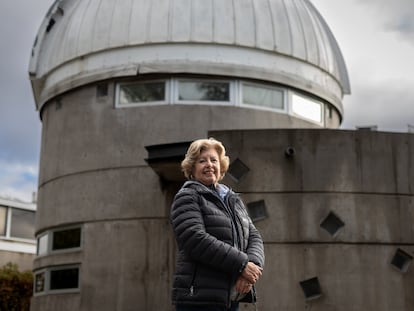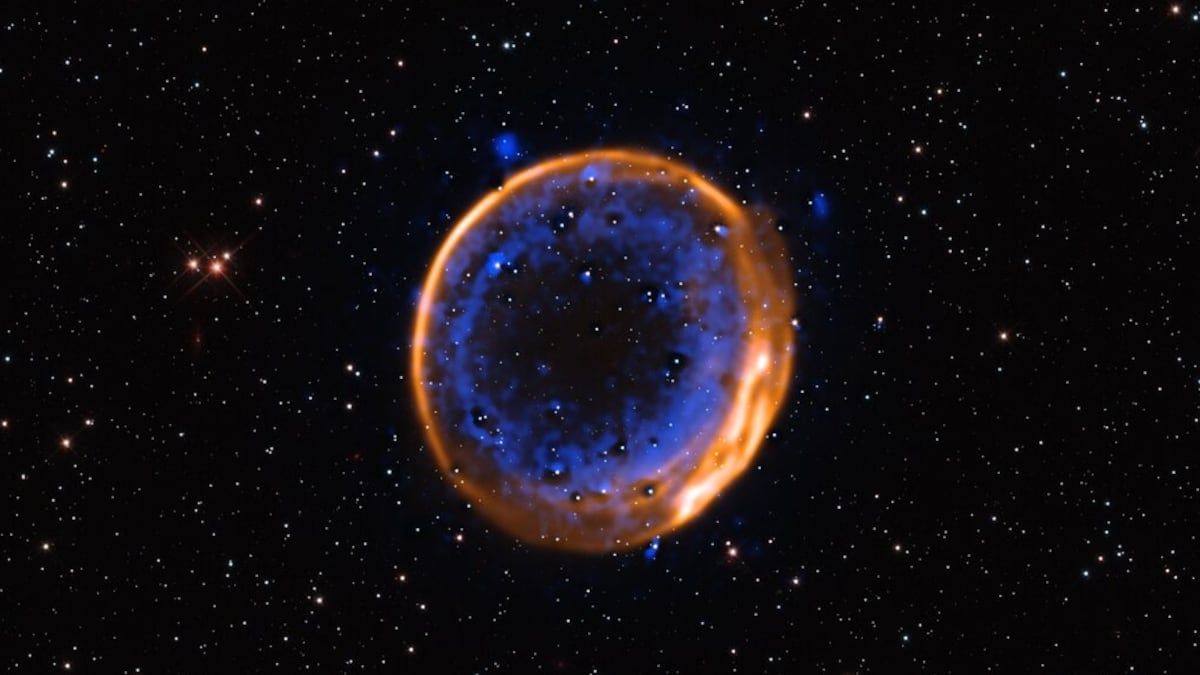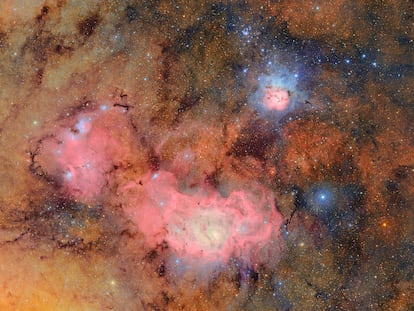The first image of a star destroyed by a double detonation captures one of the most enigmatic explosions in the universe.

A team of astronomers has obtained the first visual evidence of a star that died in a double explosion. These are the remnants of supernova SNR 0509-67.5, observed with the European Southern Observatory's (ESO) Very Large Telescope (VLT). Researchers have detected patterns that confirm that the star suffered two explosions and published their findings this Wednesday in the journal Nature Astronomy . The discovery, according to ESO, shows "one of the most significant explosions in the Universe in a new light."
SNR 0509-67.5 was a white dwarf. And while most supernovae result from the death of massive stars, they can also occur in the small, inactive cores left behind after stars like the Sun burn their fuel. These dying white dwarfs can produce what the astronomical community calls a Type Ia supernova.
Priyam Das, a PhD student at the University of New South Wales in Canberra, Australia, and one of the authors of the new study, stated in a press release issued by ESO that “white dwarf explosions play a crucial role in astronomy.” This is because much of modern science's understanding of how the universe expands is based on the study of these particular supernovae. However, the researcher adds that, despite their importance and after so much time, “the enigma surrounding the exact mechanism that triggers their explosion remains unsolved.”
Type Ia supernovae originate from a white dwarf within a binary system . There, the first star can steal material from its companion star if they are close enough. According to the model most accepted by astronomers, the white dwarf accretes mass until it reaches a critical limit, triggering a single explosion. However, recent studies propose a different scenario: in some cases, the supernova could be caused by a double explosion that occurs before the white dwarf reaches this critical mass.
The new photograph shows that the theory was correct. Some Type Ia supernovae explode through a “double detonation” mechanism . The ESO explains it this way: “In this alternative model, the white dwarf is surrounded by a shell formed by the stolen helium, which can become unstable and ignite. This first explosion generates a shock wave that travels around the white dwarf and into its interior, triggering a second detonation in the star's core and ultimately creating the supernova.”
This is the first clear visual evidence of this double explosion of a white dwarf. The key to the discovery was the detection of a distinctive pattern in the star's remains: separate layers of calcium that are only visible after the initial explosion . In the images, the calcium appears as a blue halo.
The team was able to detect these layers in the supernova remnant thanks to a special instrument on the VLT. "This tangible evidence of a double detonation not only contributes to solving a long-standing mystery, but also offers a visual spectacle," the study concludes.
Do you want to add another user to your subscription?
If you continue reading on this device, it will not be possible to read it on the other device.
ArrowIf you want to share your account, upgrade to Premium, so you can add another user. Each user will log in with their own email address, allowing you to personalize your experience with EL PAÍS.
Do you have a business subscription? Click here to purchase more accounts.
If you don't know who's using your account, we recommend changing your password here.
If you decide to continue sharing your account, this message will be displayed indefinitely on your device and the device of the other person using your account, affecting your reading experience. You can view the terms and conditions of the digital subscription here.

EL PAÍS







